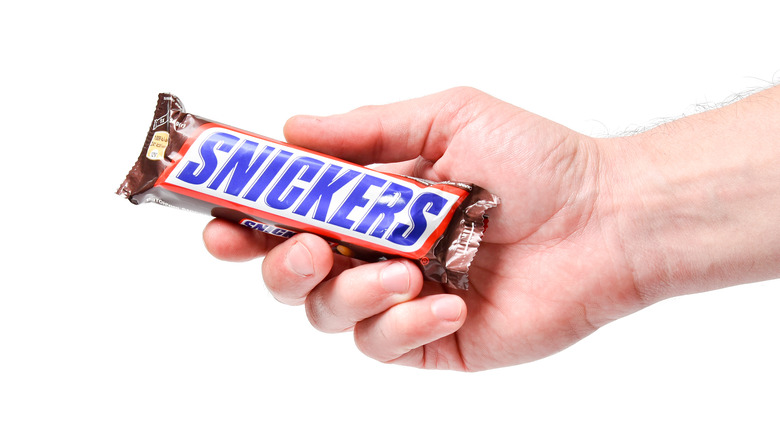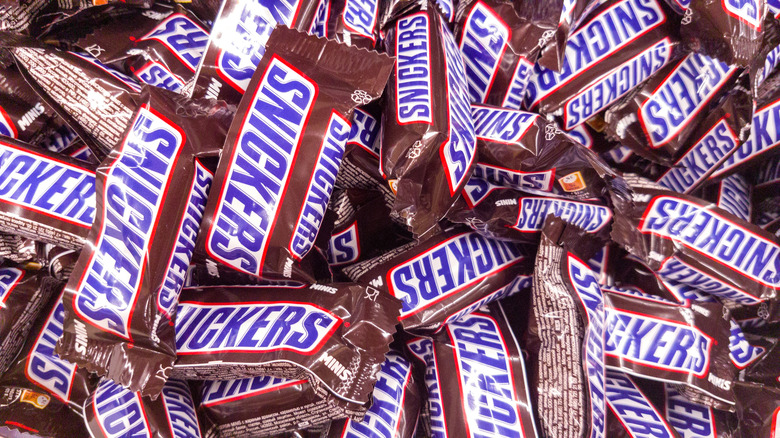The Truth About Caffeinated Snickers Bars
Snickers is an easy treat that's perfect when you are searching for a quick snack that does not require any effort from your end. Snickers bars have been making a splash for ages. Per The Daily Meal, they were created by Frank Mars in 1930. (Yes, Mars is also the man behind Mars chocolate bars.) Also, interestingly, the company hasn't been afraid of occasionally experimenting with its products. For example, it released double chocolate bars in the 1930s for a couple of years. They were aptly christened "Double Snickers."
Snickers also experimented with caffeinated bars at some point. The product was called "Snickers Charged" and was launched back in 2008. What was different about these bars? They promised an extra boost of caffeine, which was definitely good news for those who were looking to feel energized while snacking on candy. Sadly, the company's plan didn't really succeed and the bars were never re-introduced. So, why did these candy bars fail to make an impact on consumers?
Caffeinated Snicker bars were not impressive
The problem with Snickers Charged bars was that they were not doing anything for consumers. The bars had peanuts, coupled with ingredients such as taurine and a lot of caffeine (60 milligrams, to be accurate). Mars' vice president Michele Kessler told the New York Daily News back then, "[Snickers Charged] offers consumers a bar of substance and a delicious and satisfying way to tackle the afternoon hours when one needs to repower."
Nutrition experts weren't impressed because the bars had over 200 calories of sugar that people simply did not need to consume when they were in need of a quick boost. Basically, it was not far-fetched to imagine that someone could get addicted to these bars. Unhealthy much? Nutrition expert Tina Fuchs pointed out that withdrawal symptoms were also likely post addiction to these bars and could potentially cause unpleasant symptoms, such as difficulty falling asleep and headaches. Thanks, but no thanks.

